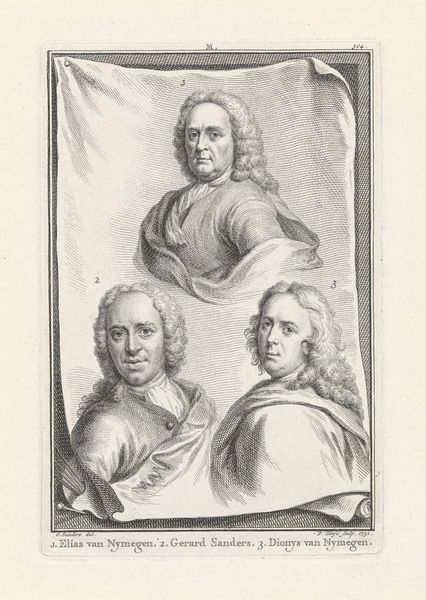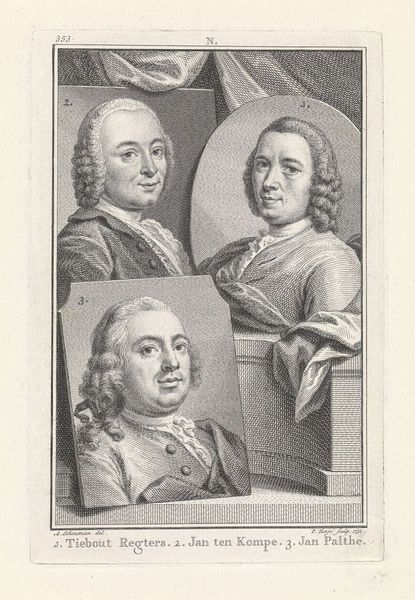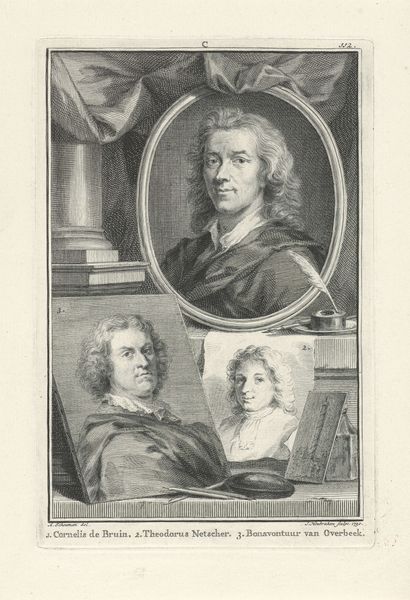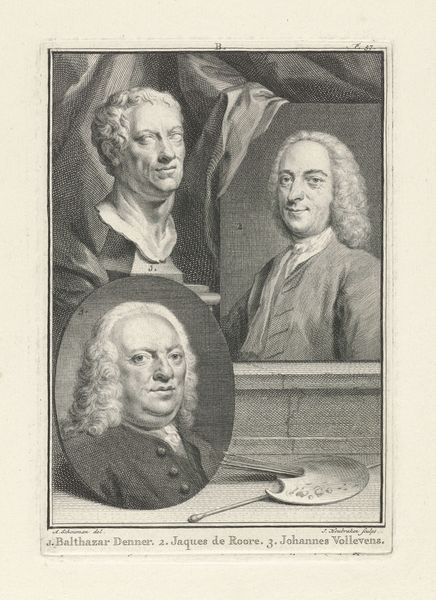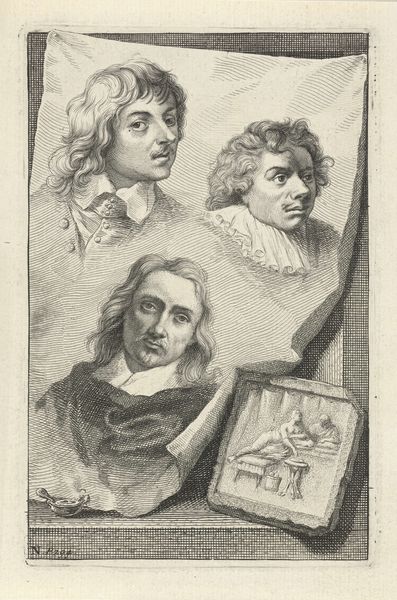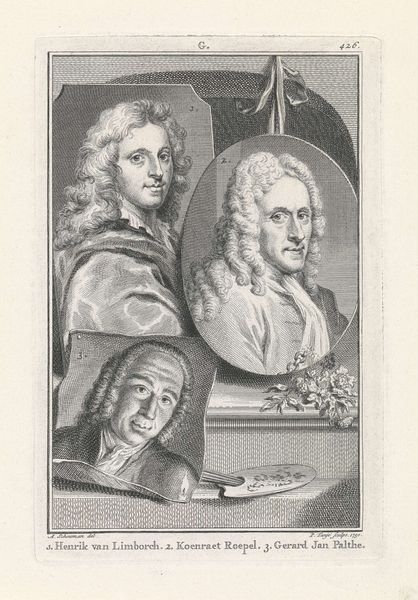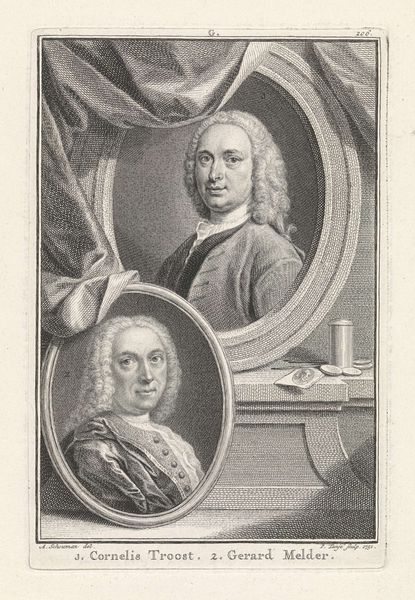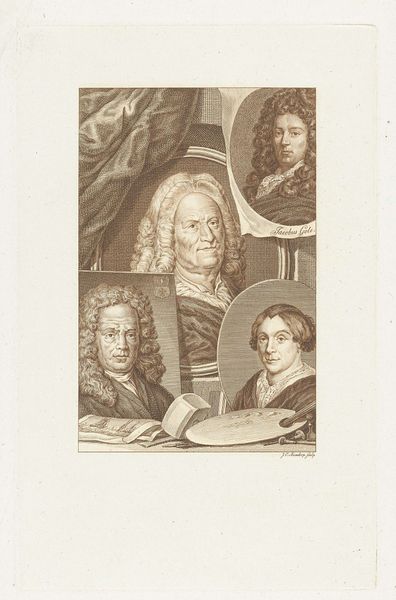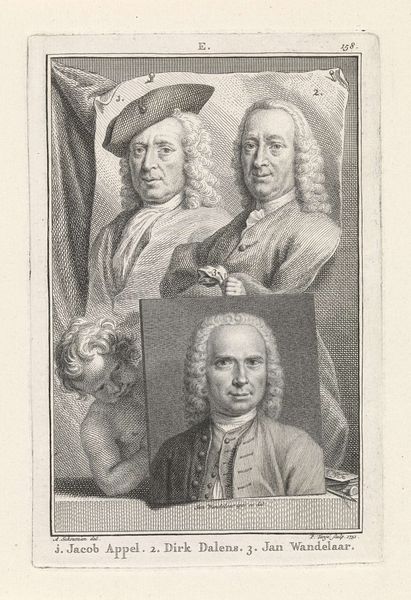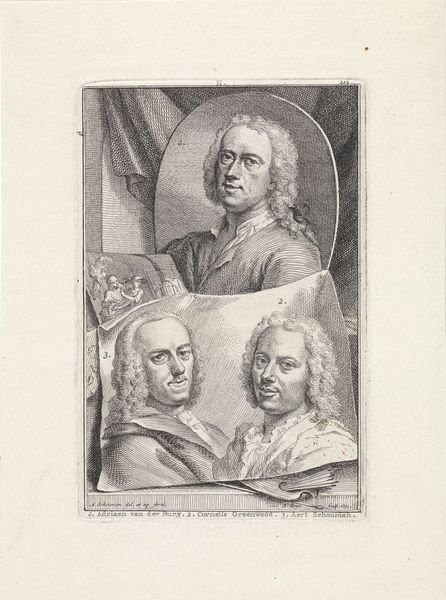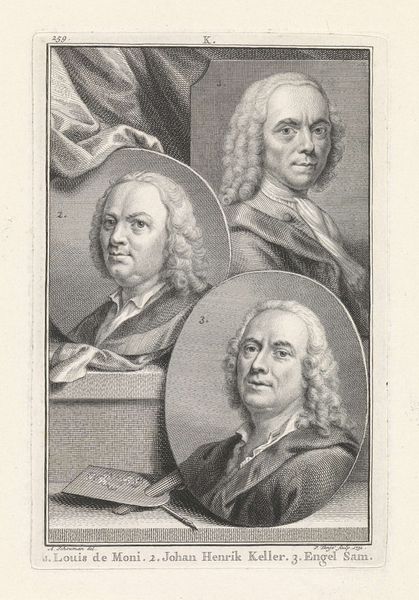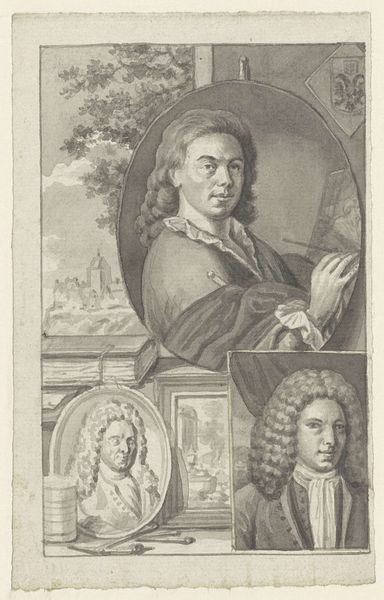
engraving
#
portrait
#
baroque
#
old engraving style
#
traditional media
#
history-painting
#
engraving
Dimensions: height 159 mm, width 101 mm
Copyright: Rijks Museum: Open Domain
Pieter Tanjé created this portrait of Jan Weenix, Robbert Duval, and Johannes Vollevens using etching around 1731. The composition divides the figures into three distinct rectangular and oval spaces, each framing a portrait. Note how Tanjé uses line and form to create depth and hierarchy. The top portrait is framed by an ornate oval, set against a landscape backdrop, suggesting a romanticized view. Below, the portraits are more grounded, integrated with their professions through the inclusion of a painter's palette. Tanjé employs fine, detailed lines to render the textures of hair and fabric, adding a tactile quality to the visual experience. This structured arrangement reflects Enlightenment ideals, organizing knowledge and representing individuals within a clear, rational framework. Tanjé's etching uses form to construct not just images of individuals, but a statement about their roles and status within society. The artwork invites us to consider how portraits function as constructed representations, reflecting cultural values and intellectual currents of their time.
Comments
No comments
Be the first to comment and join the conversation on the ultimate creative platform.
